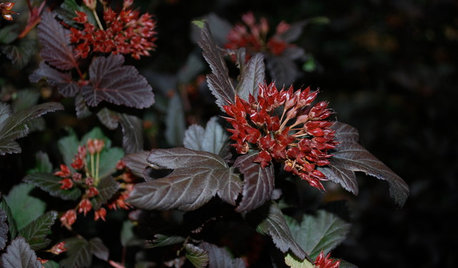The magic window for transplanting shrubs
faeriegardenmum zone 6
10 years ago
Related Stories

MOST POPULAR20 Ways to Work White Magic in Your Yard
Create enchanting outdoor spots with fresh white fences, florals and furniture
Full Story
GARDENING GUIDES9 Self-Seeders Capture Chelsea Flower Show Magic
Give your garden show-worthy style with these plants beloved by top designers
Full Story
LANDSCAPE DESIGNExplore a Magical Restored English Garden
History comes alive in the gardens of a Rochester townhouse, filled with sculptural yew, a topiary parterre and an archway-draped pond
Full Story
HOUZZ TOURSMy Houzz: A Dream Indoor-Outdoor Home in Nicaragua
Breeziness and deep connections with the outdoors create an air of paradise for U.S. transplants
Full Story
LANDSCAPE DESIGNGreat Design Plant: Sun-Loving Bougainvillea Showers Yards With Color
Bring unbeatable vibrancy to a garden or wall with this unfussy and trainable shrub packed with colorful bracts
Full Story
GARDENING GUIDESBoxwood: Still Shape-Shifting After 350 Years
Wild or mild, the humble boxwood still brings style and order to all kinds of gardens
Full Story
LANDSCAPE DESIGNThe Unparalleled Power of Trees
Discover the beauty and magic of trees, and why a landscape without them just isn't the same
Full Story
LANDSCAPE DESIGNGreat Design Plant: Sun-Loving Ninebark Puts on a Color Show
This tall, dark and handsome native shrub is equally at home in jeans and boots or in a suit and tie
Full Story
FALL GARDENINGWhy Fall Is the Best Time for Planting
Spring is overrated for planting. Starting plants in autumn has advantages for both garden and gardener
Full Story
WINDOWSHow to Ditch the Drapes and Let Your Windows Shine
If your home has beautiful windows and you don’t need to hide a view, consider dressing them in these elegant, creative ways
Full Story





northga
faeriegardenmum zone 6Original Author
Related Professionals
Fitchburg Landscape Architects & Landscape Designers · Bristol Landscape Contractors · Clearlake Landscape Contractors · East Hanover Landscape Contractors · Indio Landscape Contractors · Las Vegas Landscape Contractors · Spring Landscape Contractors · Tehachapi Landscape Contractors · Chaska Fence Contractors · Columbia Fence Contractors · Grover Beach Fence Contractors · Maywood Fence Contractors · Arroyo Grande Window Contractors · Decatur Window Contractors · Northbridge Window ContractorsChris-7b-GA
brandon7 TN_zone7
Chris-7b-GA
faeriegardenmum zone 6Original Author
brandon7 TN_zone7
rosiew
Chris-7b-GA
rosiew